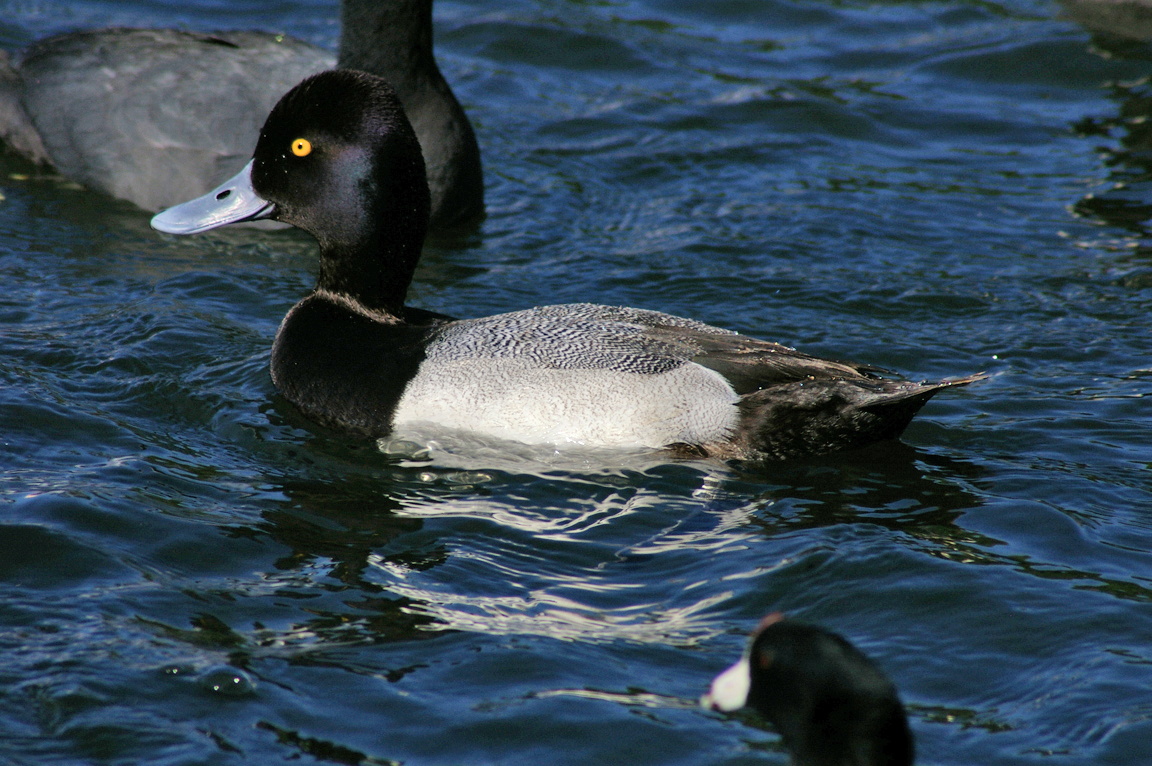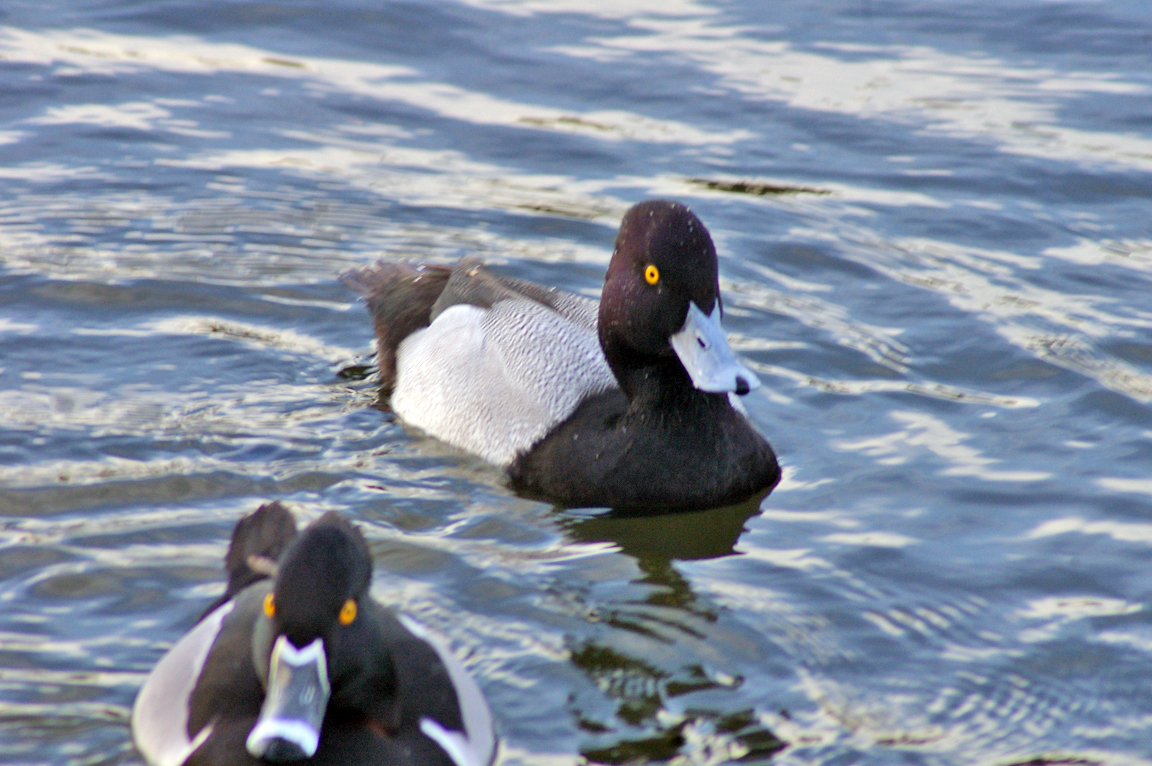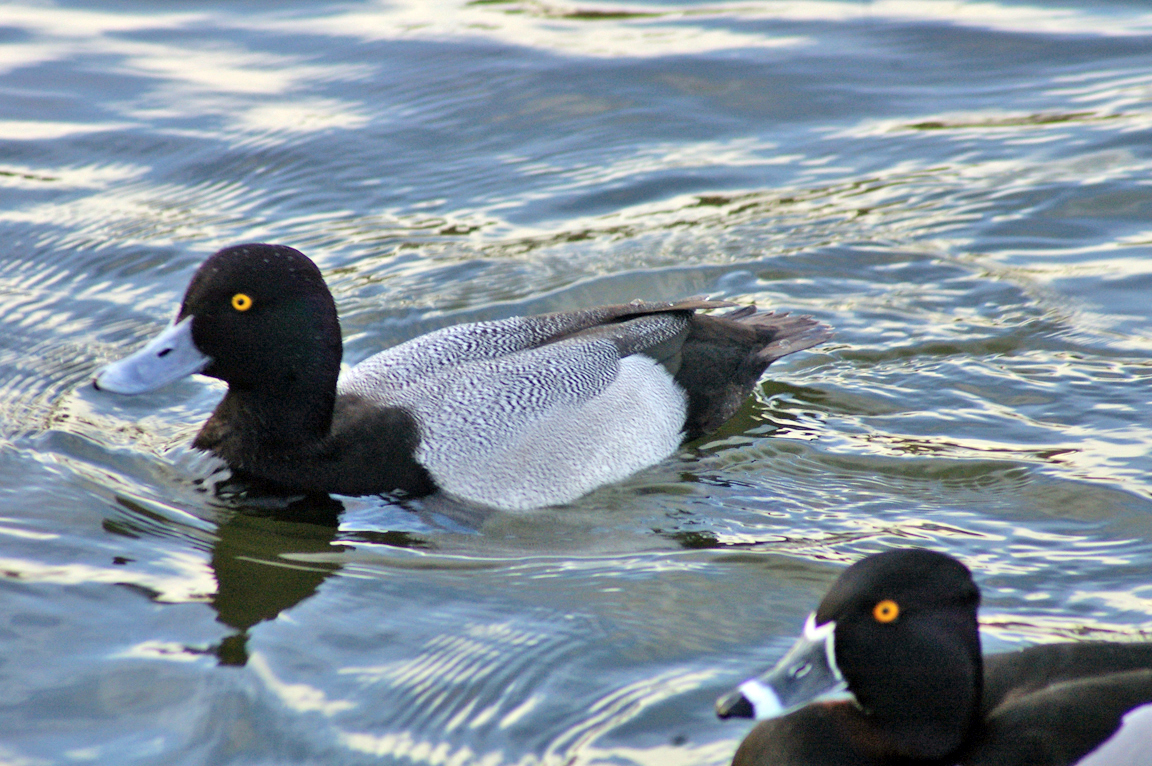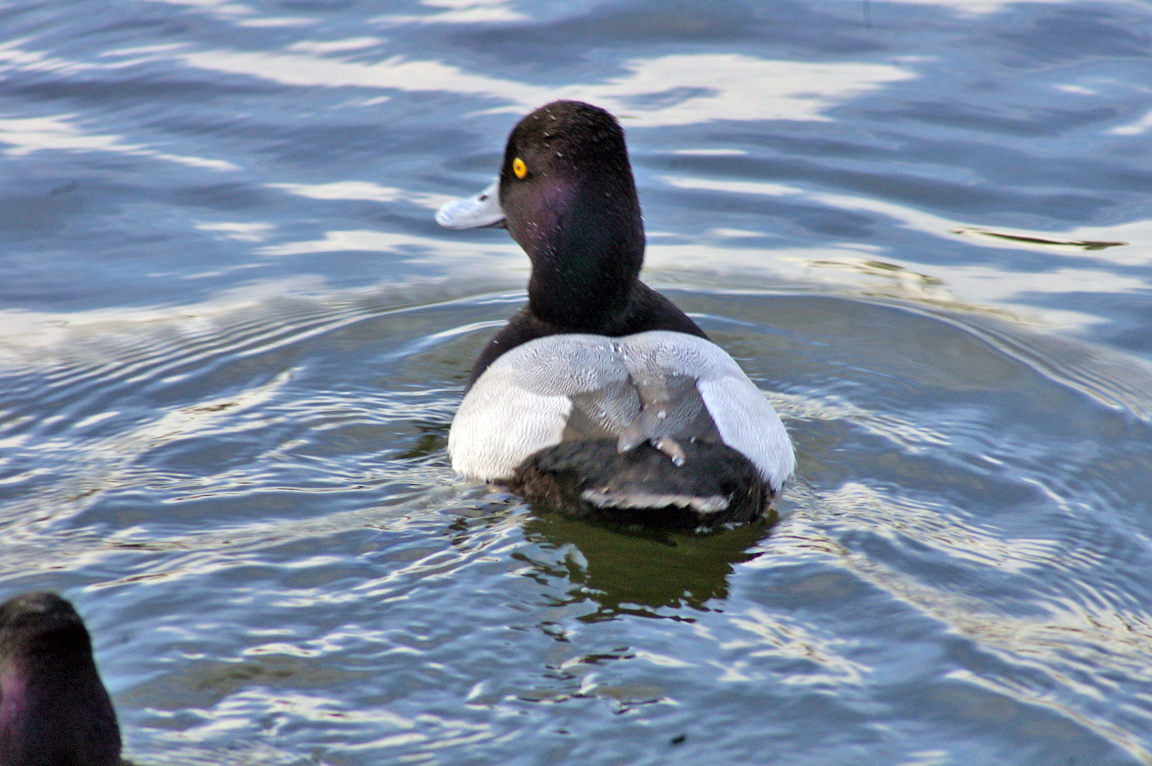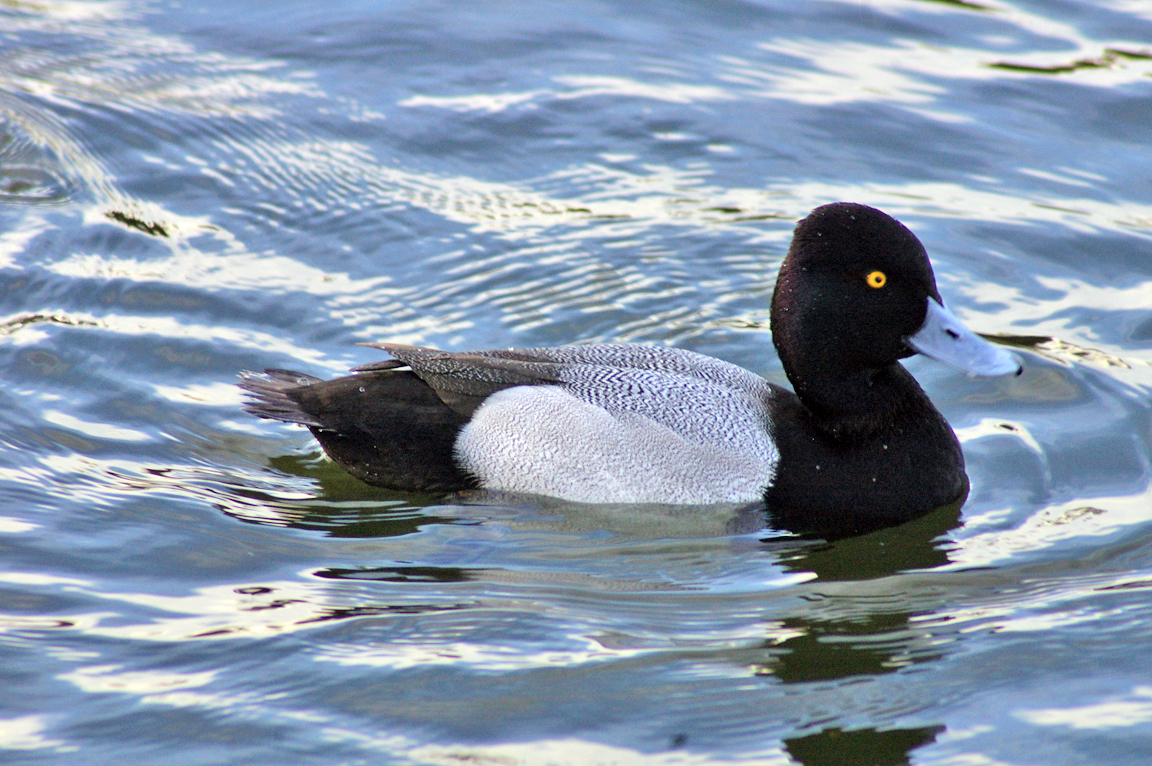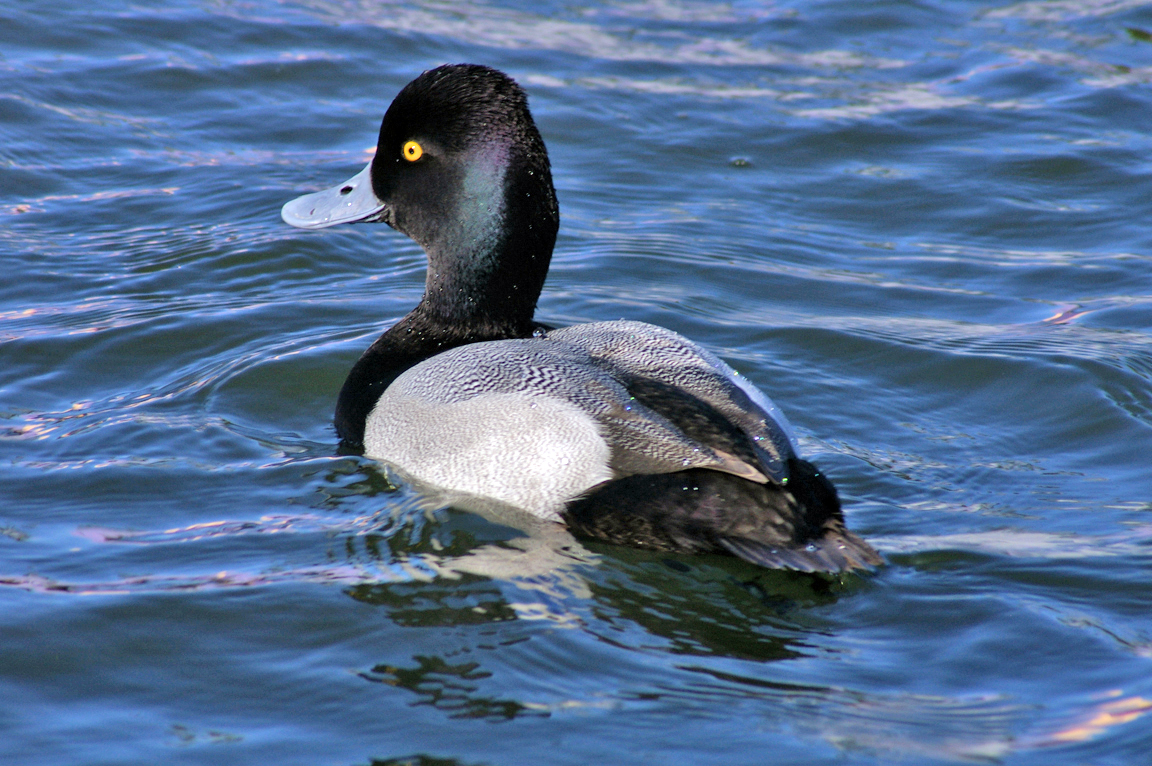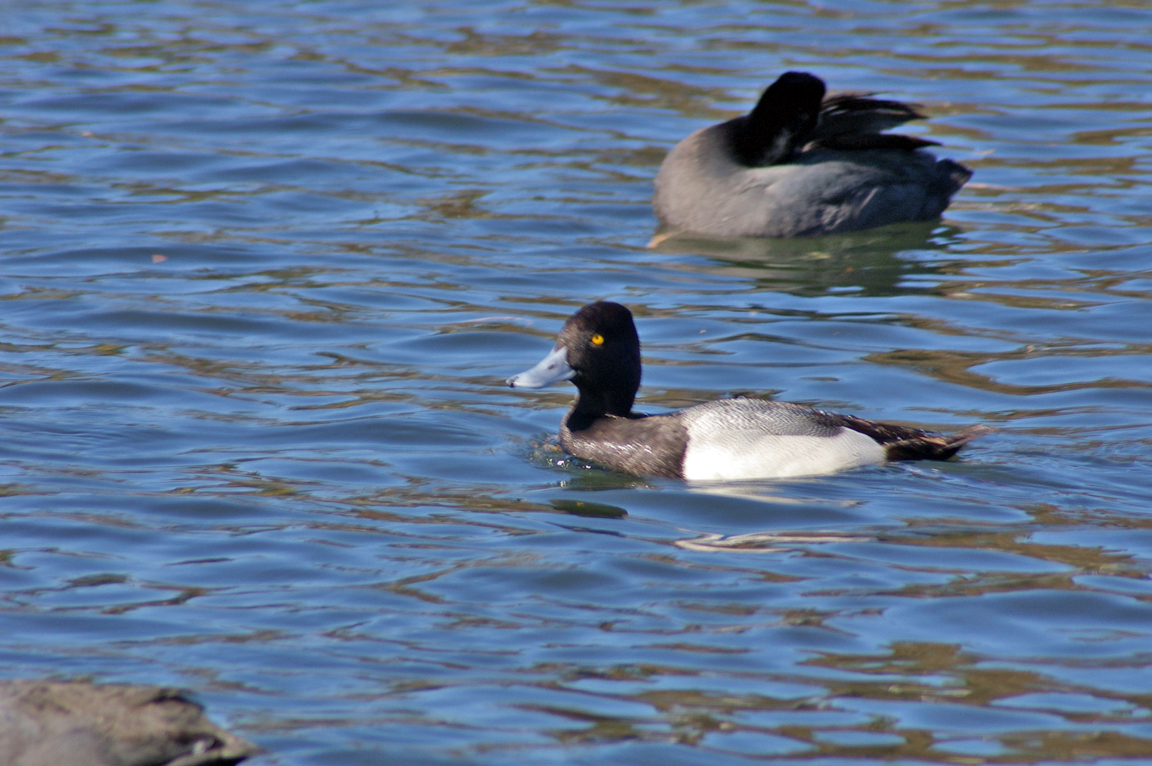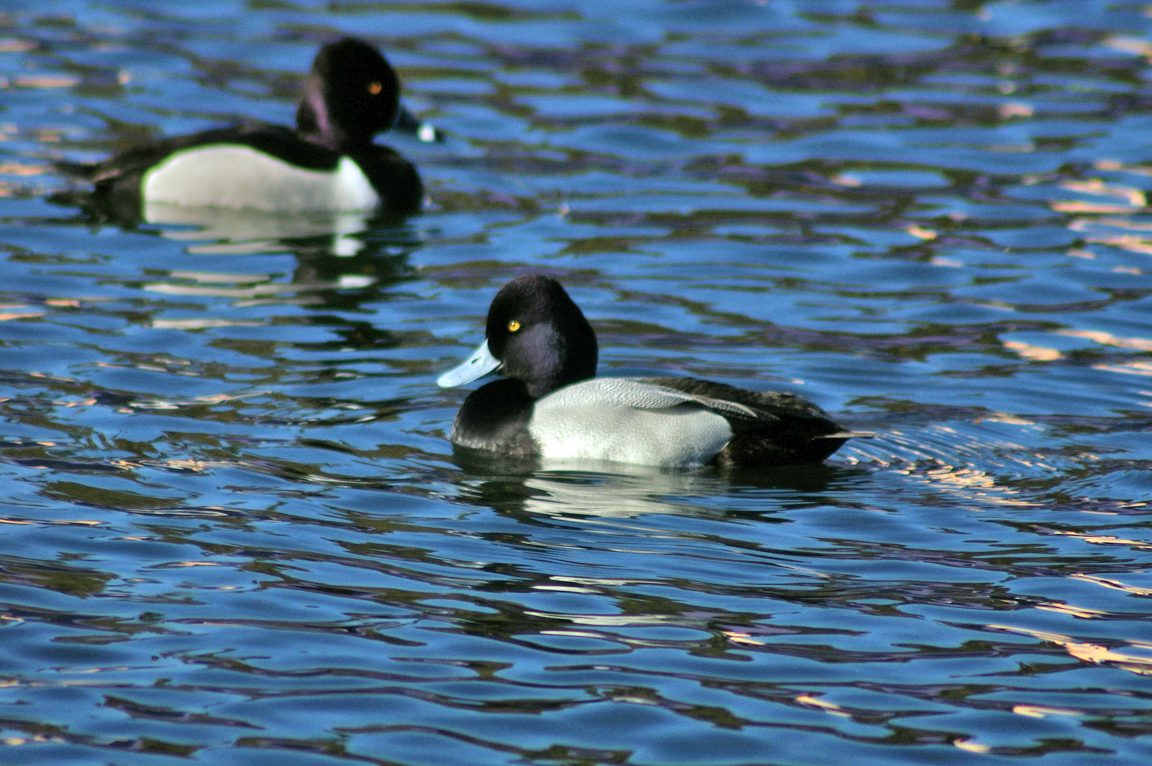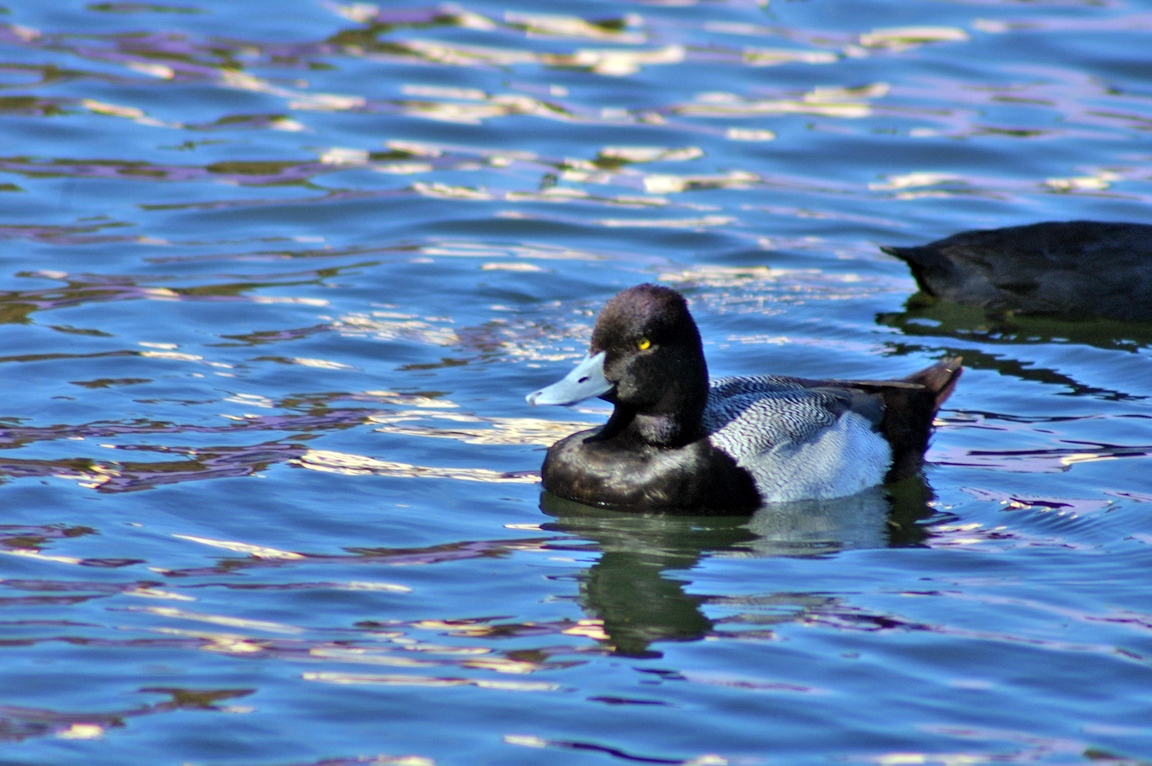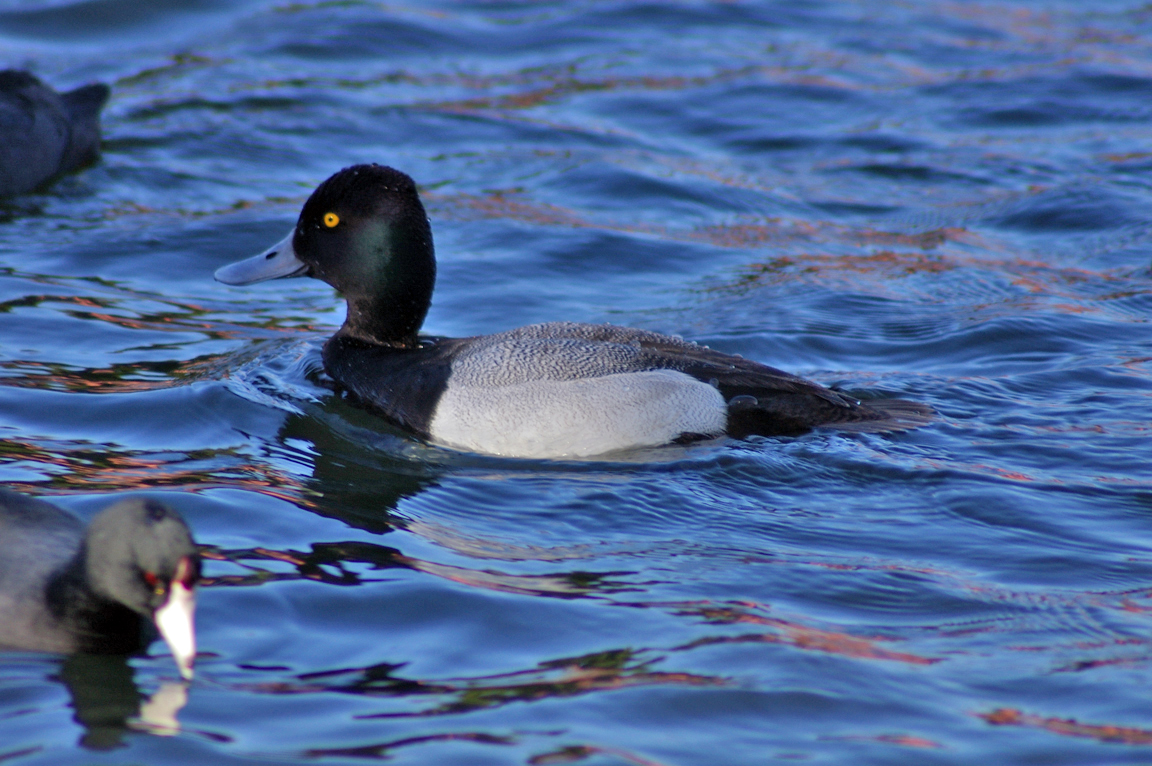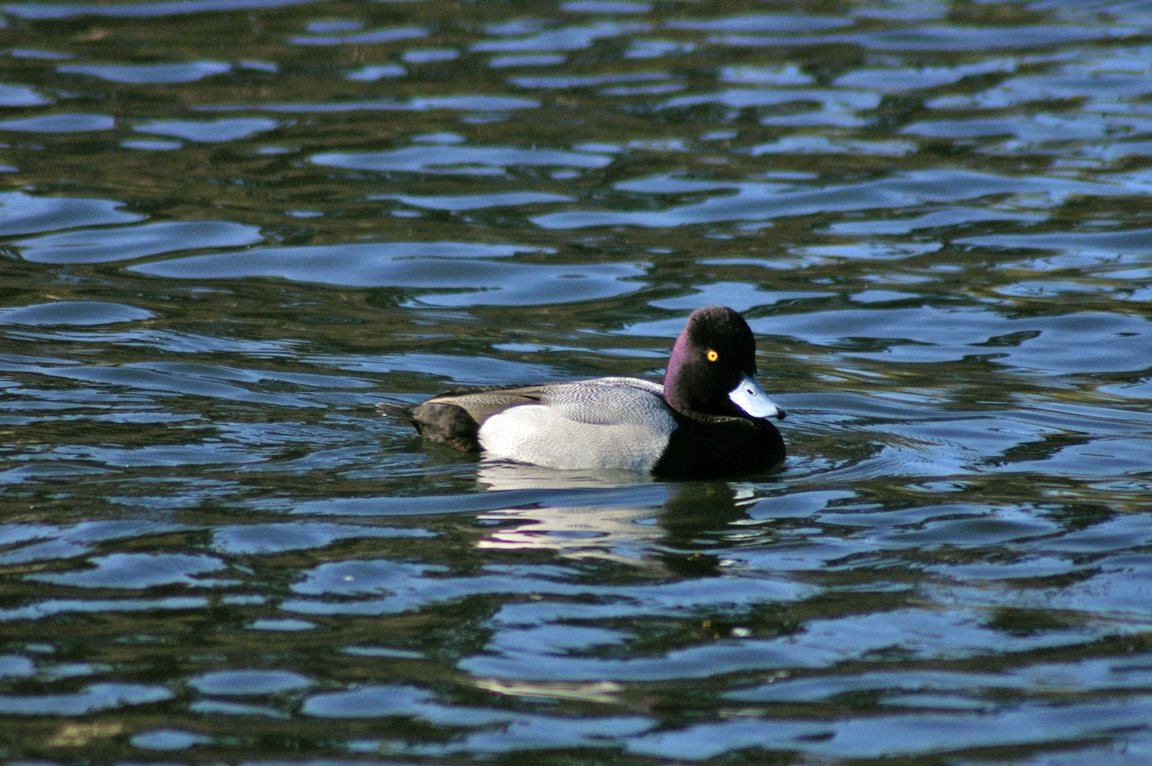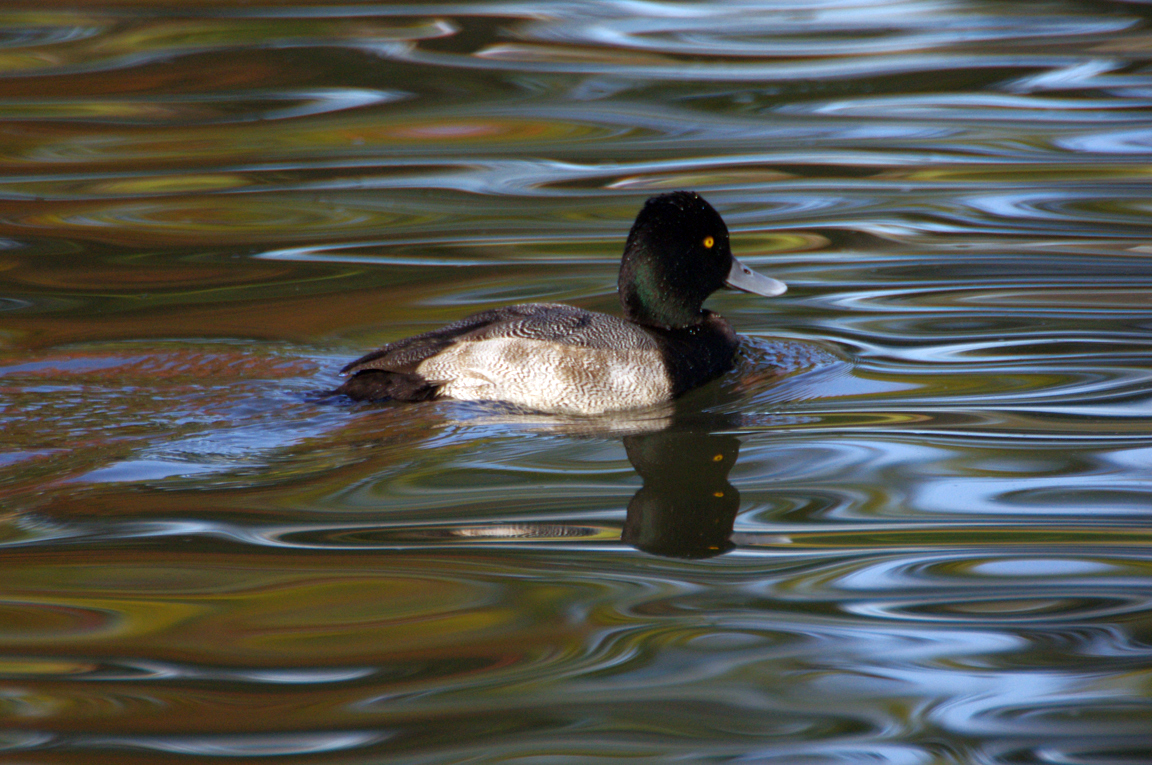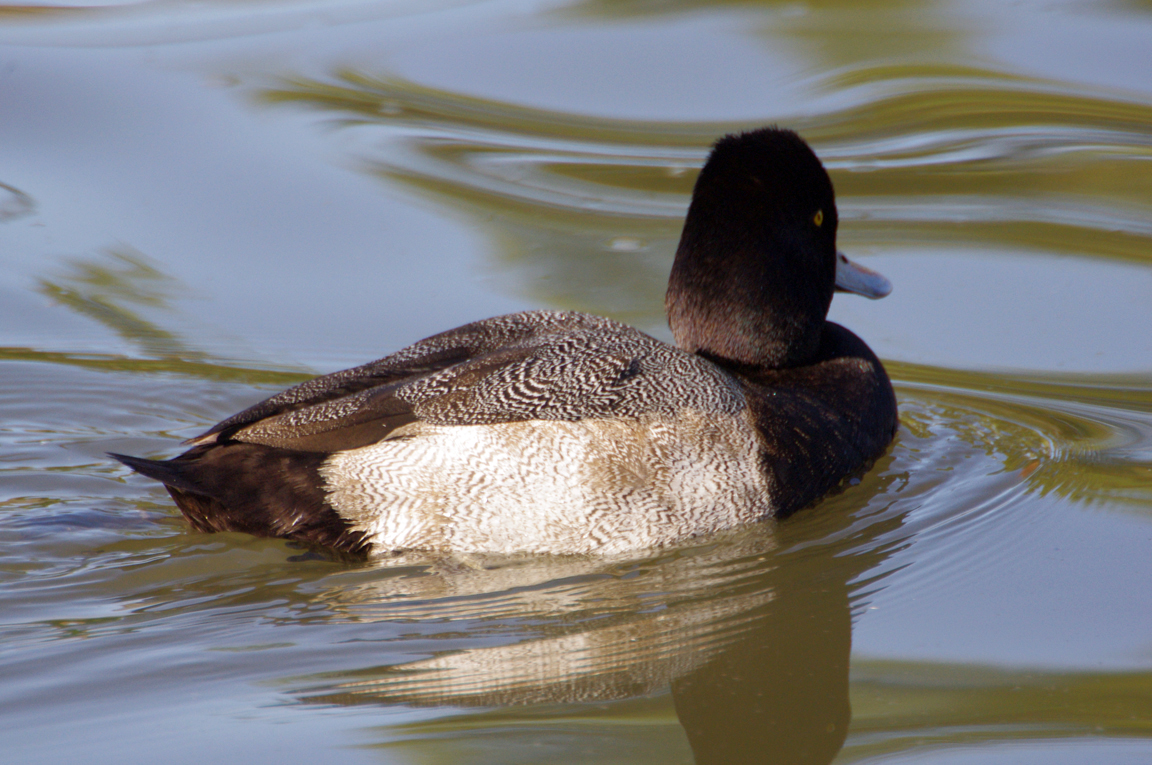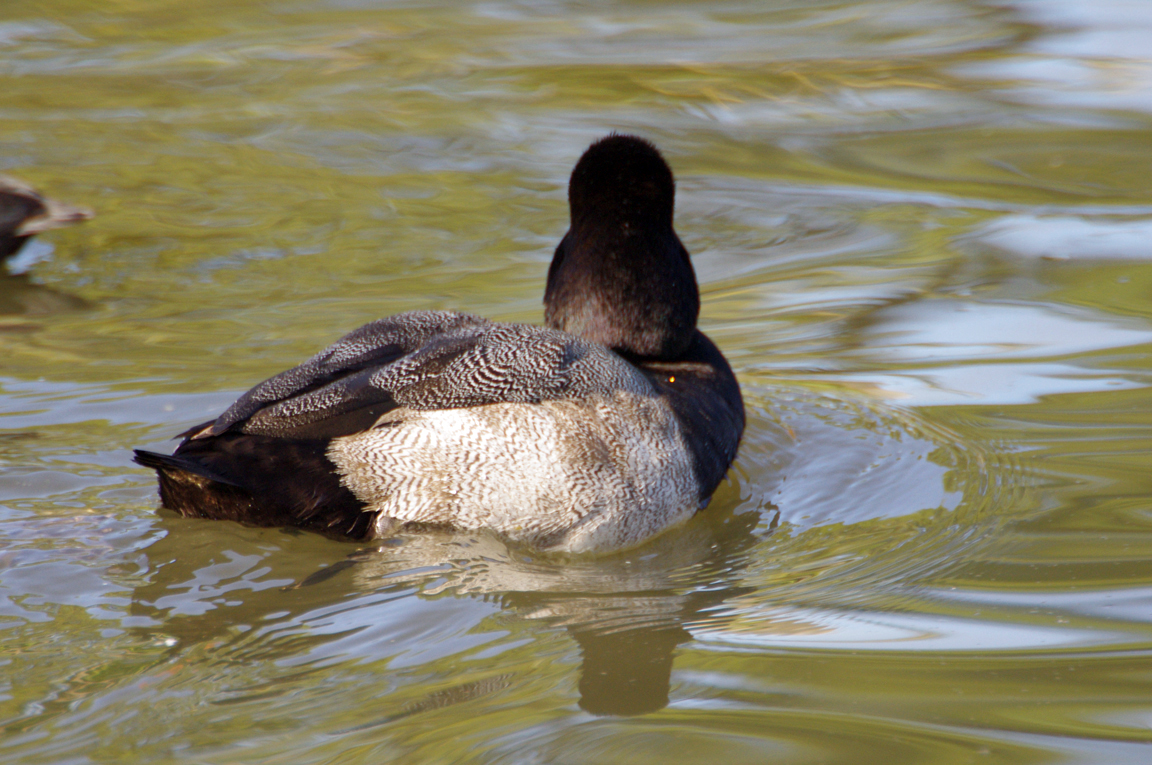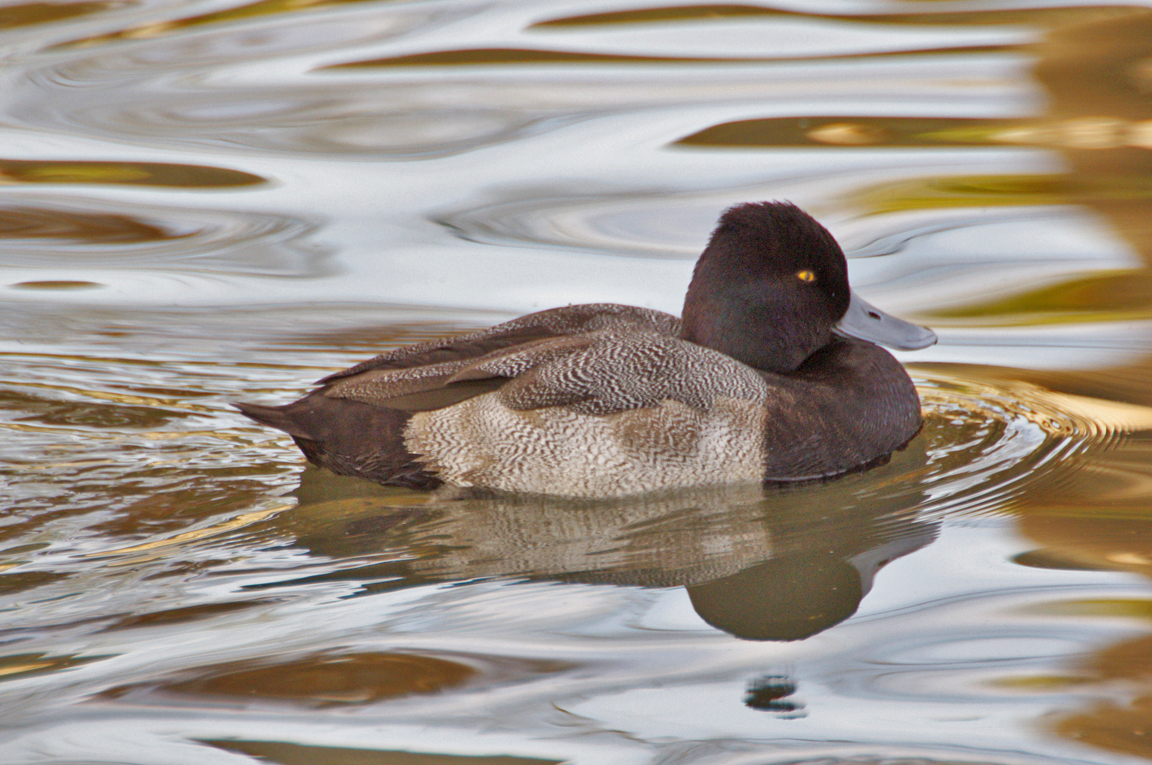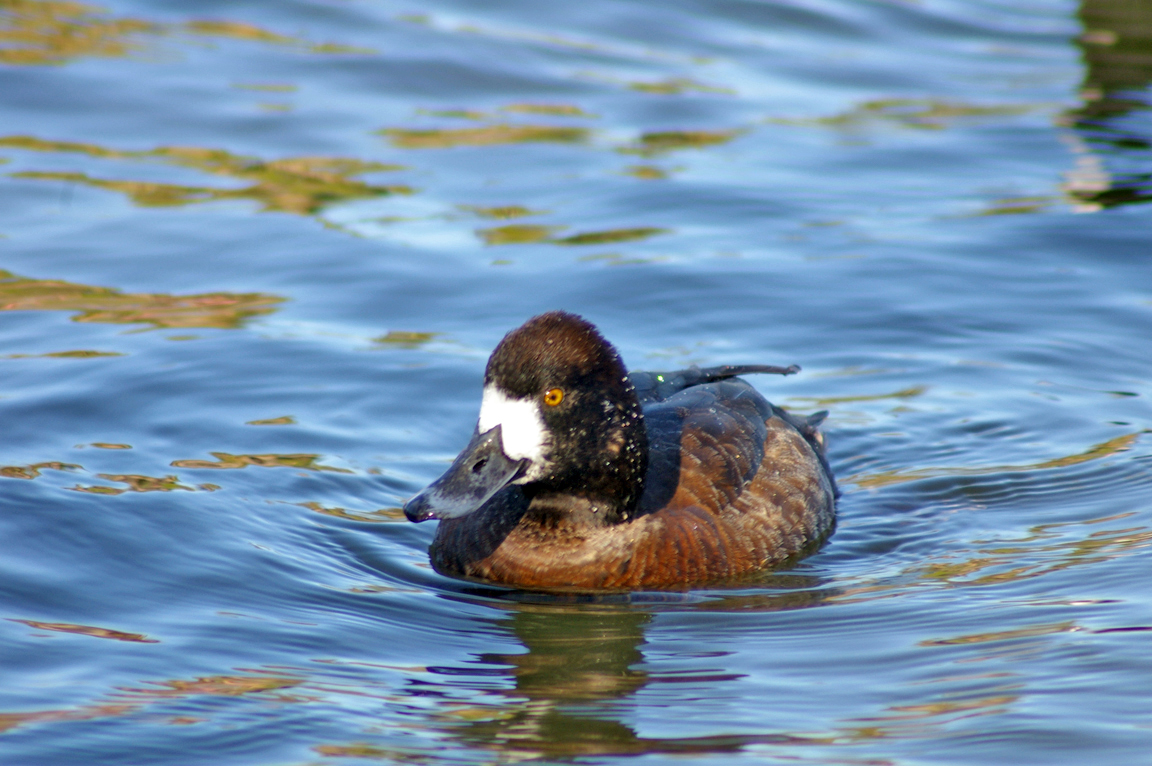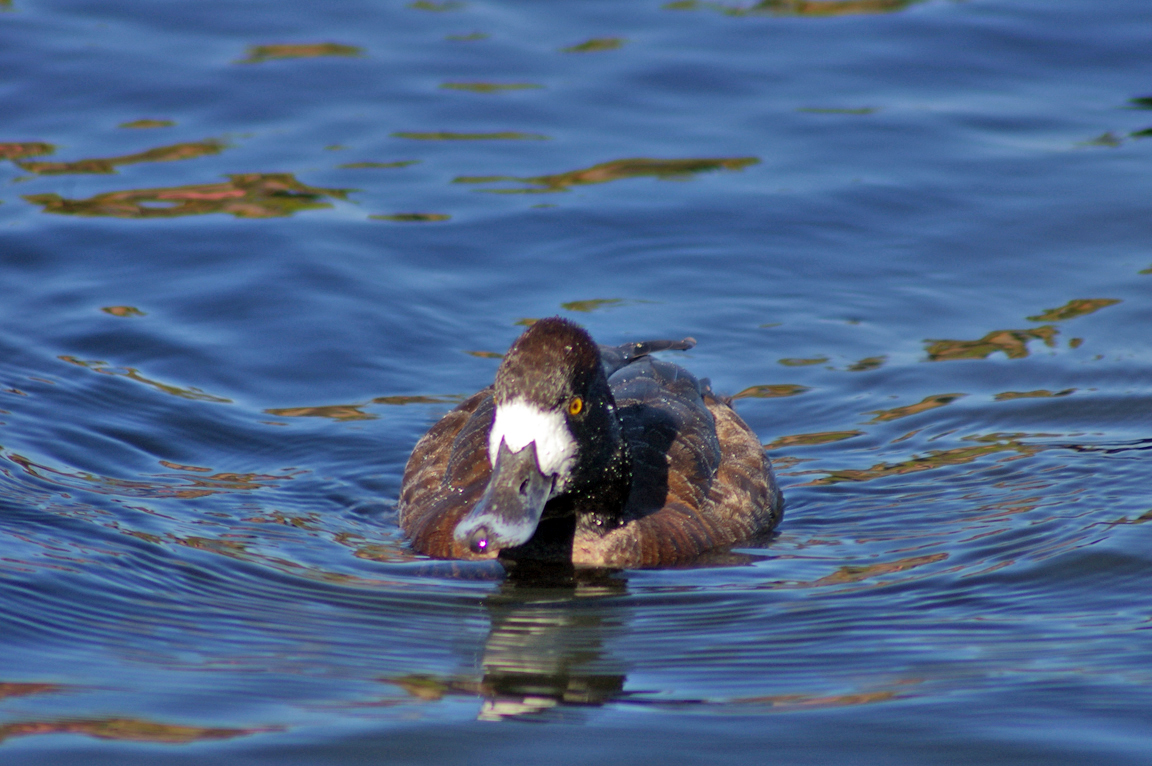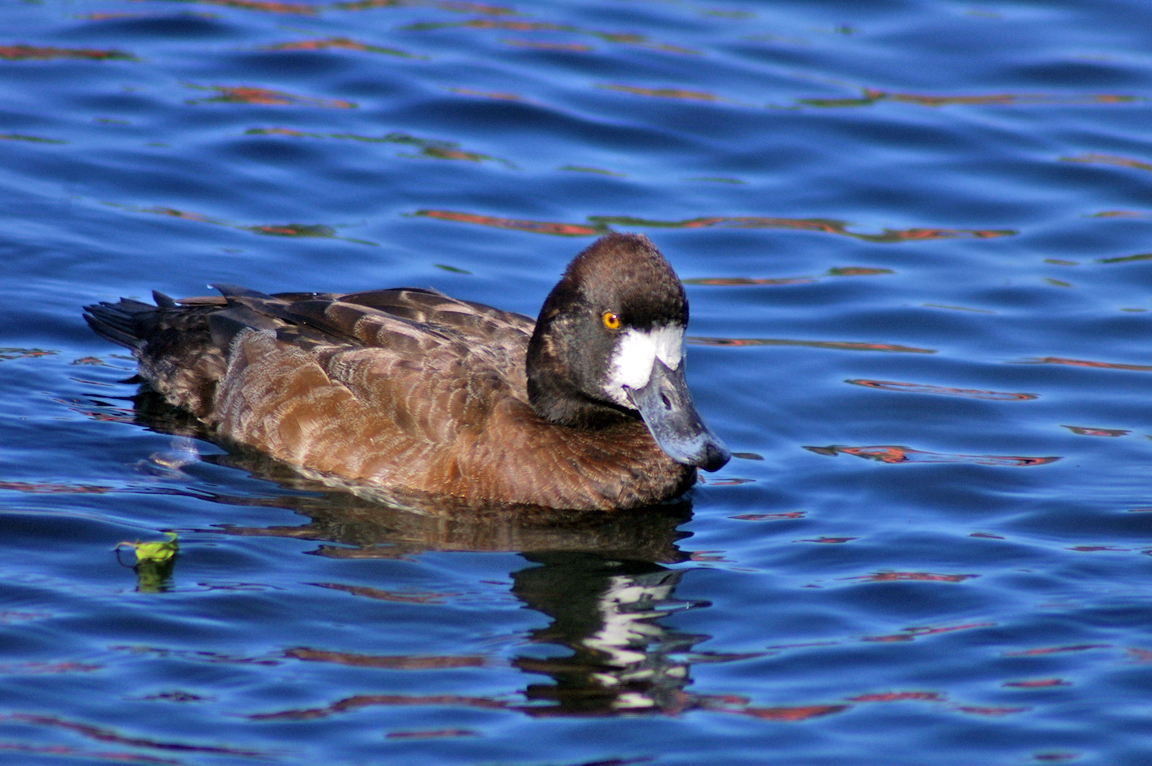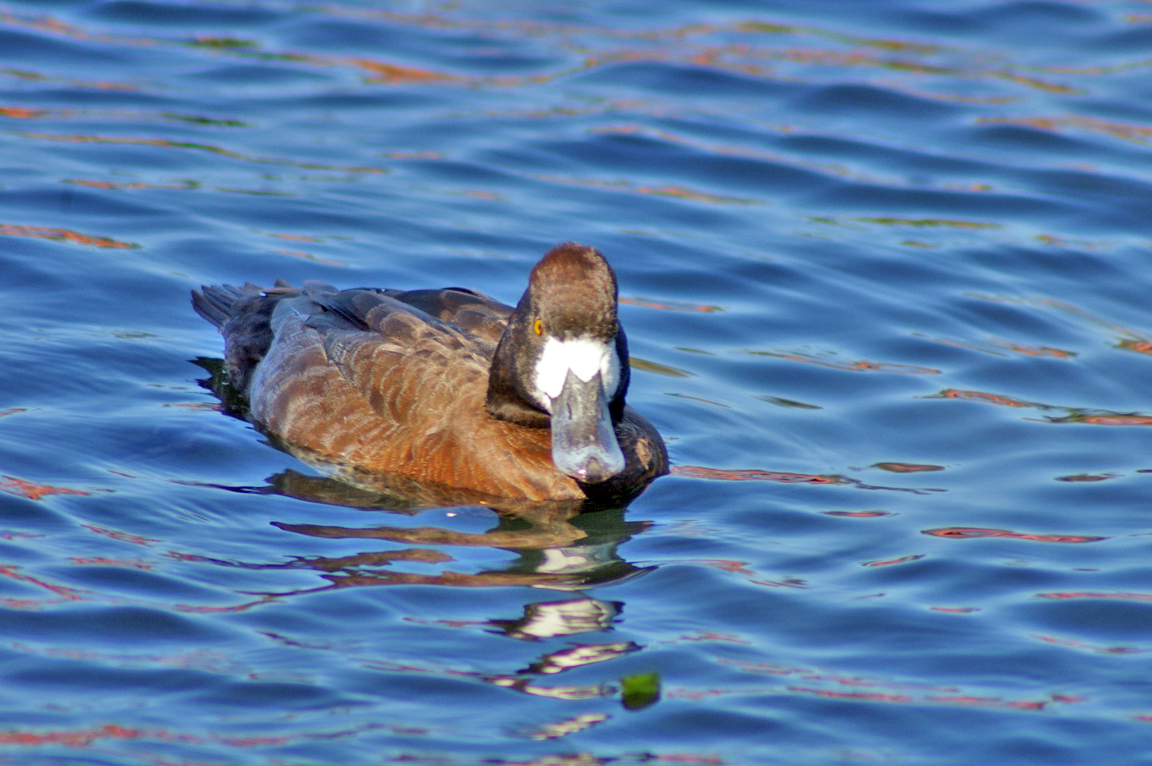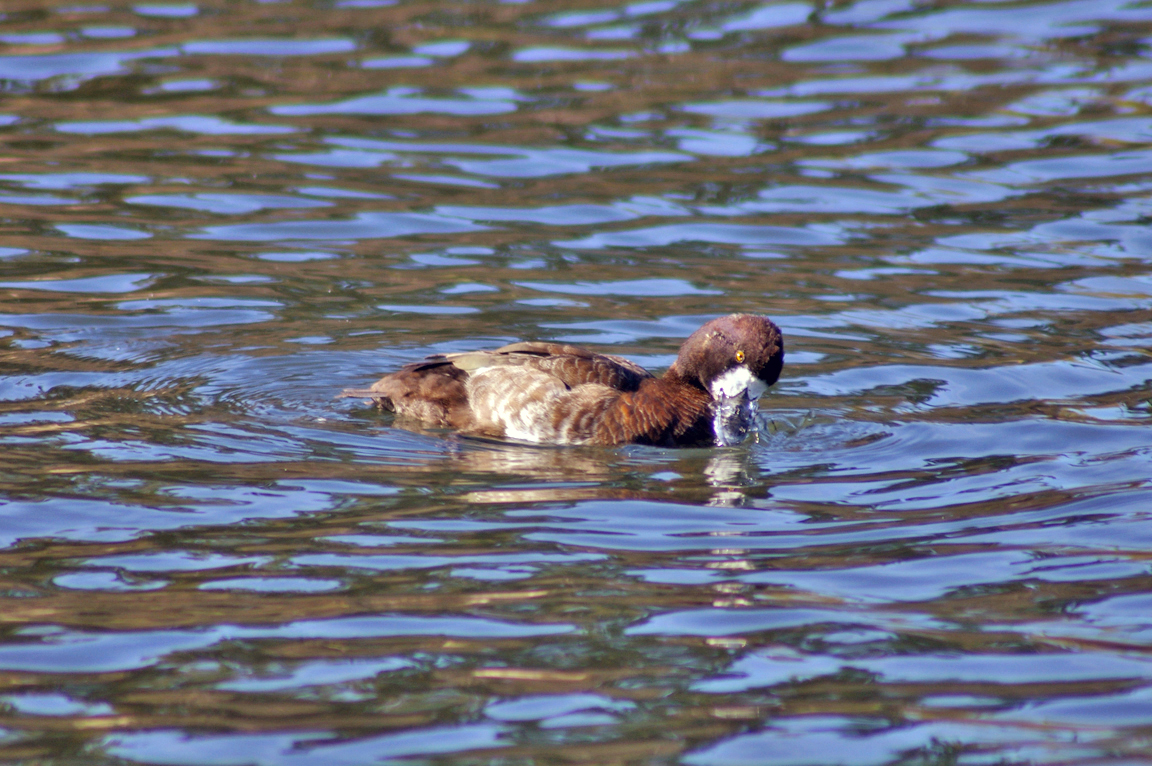|
|
|
 |
Lesser Scaup
|
| Aythya affinis | |
Two scaup species live in North America: the Greater Scaup prefers salt water and is found in America and Eurasia, while the Lesser Scaup prefers freshwater and is found only in North America. The Lesser Scaup is one of the most abundant and widespread of the diving ducks in North America
Interesting Information
-
The Lesser Scaup is a regular, if relatively uncommon, visitor to Hawaii, and is the third most abundant duck in the state. Only the Hawaiian Duck actually breeds there.
-
An adult Lesser Scaup may pretend to be dead (immobile with head extended, eyes open, and wings held close to body) when grasped by a red fox.
-
Lesser Scaup chicks are capable of diving under water on their hatching day, but they are too buoyant to stay under for more than just a moment. By the time they are 5 to 7 weeks old they are able to dive for 2-25 seconds and swim underwater for 15-18 meters (50-60 ft).
Description
Adult Description
-
Size: 39-46 cm (15-18 in)
-
Wingspan: 68-78 cm (27-31 in)
-
Weight: 454-1089 g (16.03-38.44 ounces)
-
Medium-sized diving duck.
-
Slight bump or peak on back of head.
-
Bill bluish with small black tip.
-
Male with black head, chest, and rear end, and gray sides (black on the ends and white in the middle).
-
White stripe extends only half-way out wings.
-
Eyes yellow.
-
Legs grayish, with dark gray webs.
Sex Differences
Breeding male bold black-and-white; female drabber and more brown with white patch at base of bill.
Male
Breeding (Alternate) Plumage
Head, neck, upper back, and breast black; head with purplish iridescence. Back white, covered with thin, black wavy lines. Rump black. Belly white. Sides white, with some fine dark streaks. Undertail black.
Nonbreeding (Basic) Plumage
Similar to female, but with only a few white feathers on face instead of a large white patch. Head and neck blackish brown. Breast dark with some white edging to feathers. Back brown with white edges to feathers. Underparts mottled brownish and white. Tail dark grayish.
Female
White area at base of bill. Head and neck dark brown with some light mottling. Back darkish brown with white flecks. Breast buffy brown. Belly whitish. Sides and flanks brown. Tail dark brown.
Immature
Similar to adult female.
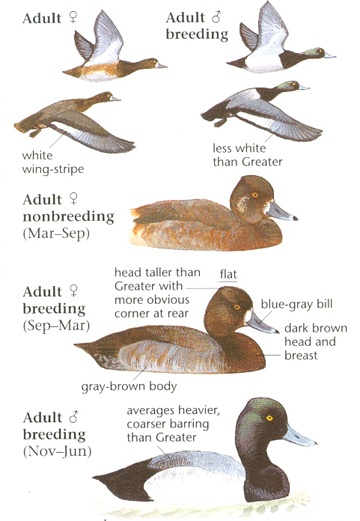
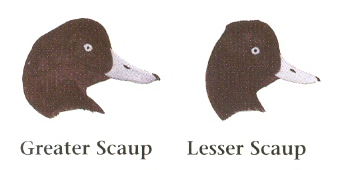
Photo taken from: The Sibley Field Guide by David Allen Sibley
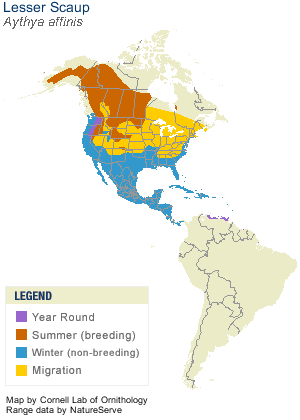
© 2003 Cornell Lab of Ornithology
|
Habitat |
|
Found on lakes and ponds. Winters in fresh or brackish water. |
|
Behavior |
|
Dives under water to capture food. |
|
Food |
|
Clams, snails, crustaceans, aquatic insects, seeds, and aquatic plants. |
Taxonomy
| Kingdom: | Animalia |
| Phylum: | Chordata |
| Subphylum: | Vertebrata |
| Class: | Aves |
| Order: | Anseriformes |
| Family: | Anatidae |
| Subfamily: | Anatinae |
| Genus: | Aythya |
| Species: | Aythya affinis |
Similar Species |
|
|
Bird Sound |
|
Male makes faint whistled "whe-o" in courtship. Female makes grating "garf, garf." |
|
Eggs look like this |
|
Photo taken from: ARCTOS Collaborative Collection Management Solution |
Videos
Lesser Scaup 1
Male and Female
Lesser Scaup 2
Male - Just Chill'n
